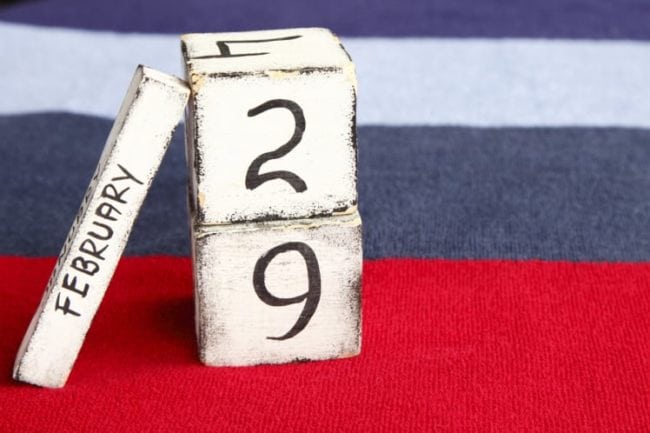Leap day, also known as leap year day, is an extra day added to the calendar every four years during leap years.. Leap day falls on February 29th and helps to keep the calendar year synchronized with the astronomical or seasonal year.
The addition of this extra day is necessary because the Earth’s orbit around the sun takes approximately 365.25 days to complete, and without leap day, the calendar year would gradually shift out of sync with the seasons.
Every four years, many who were born on February 29 get to celebrate their birthdays on the day they were born. But anything far from that, they are left with no other option than to borrow birthdays of the people born on March Ist or February 28th. This is basically because February 29 happens only once in four years since most years have 365 days while other times, a year has 366.
Those other times are known as leap years which is why that extra day which comes once in four years mostly plays a vital role in the lives of those born towards the ending of February and not much on people born on other months.
But what’s redeeming is that children are not always born on the leap day, since the chance of having a child on the date is said to be one in 1,461( four years is 1460 days, then include one for the leap year which is 1/1,461). More so, the world loses three leap years every 400 years which almost strikes out the chance.
But if you happen to be among the few leapers or leapings (those born on February 29) and have been wondering why February has been the one to suffer the loss all along, below is a chance to learn the science behind that extra day that comes once in four years known as a leap day.
Science Behind The Extra Day On Our Calendar
The world works on a solar calendar which means it depends on the sun to know when there are changes in seasons as well as knowing how long a year lasts.
On this account, one year is usually the time between the start of spring and the next time spring occurs which is usually not 365 days as it is widely thought to be instead it is 365 days, five hours, 48 minutes and 45 seconds. So in total, it is 365 days and one quarter.
This calculation helped farmers in the olden days to know the favorable conditions that come with new seasons and their effects on crop growth. However, today, the concept of time and calendar help modern farmers to effectively and correctly project what their future of the crops will be.
To avoid errors in calculating the quarter of a day and for easy calculation, the world decided to add an extra day to the calendar every four years since quarters of four days make a complete day. The concept of adding an extra one quarter of every year in four years which becomes a day by the fourth year makes the calendar very functional.
Another way to make an accurate calculation would have been to ignore the quarter of a day and have a 365 day year, then the months would slowly move in time with the sun until June falls in winter rather than summer. In essence, there will be no more “white Christmas” which Christmas that is celebrated with the presence of snow. It will also lead to no springtime Easter celebrations.
This explanation points at the reason we have a leap. What is a leap day? Well, till today many are still in dark as to what makes a year or day a leap year or day respectively. Simply put, a leap year is a year that can be divided by four. Make no mistake of confusing a leap year for century years which can only be divided by 400. But the big question is “how did February fall the victim of being the shortest? Of course, there is a reason and that reason might sound a little undeserving to the poor month which had to suffer a loss so others could work in order.
Why February Is Shorter Than The Rest
It all started because of the roles of Julius Caesar and the later Roman Emperor, Caesar Augustus. Julius created a calendar and named July after him while assigning 31 days to it. He also assigned August with 29 and then left February with 30 days.
However, Augustus didn’t agree with Julius Caesar’s mathematics so when he took over the power, he ensured August which sounded close to his name had more days than February adding two days extra to the month, taking away a day from February the lone month that seemingly wasn’t named after anybody. This explains why every four years, the world has February 29 which is a leap year.
Although the explanation seems to add the dotted lines, if there isn’t a leap year, the world’s calendar will be faulty. The extra day is a remedial measure for the world’s calendar system which Julius Caesar added to make up for calendar shifts even though reputable astronomers at the time counseled him against doing so.
The last time the world had a leap year was on February 29, 2016, and this goes to tell that another won’t happen any soon until 2020 followed by 2024.
